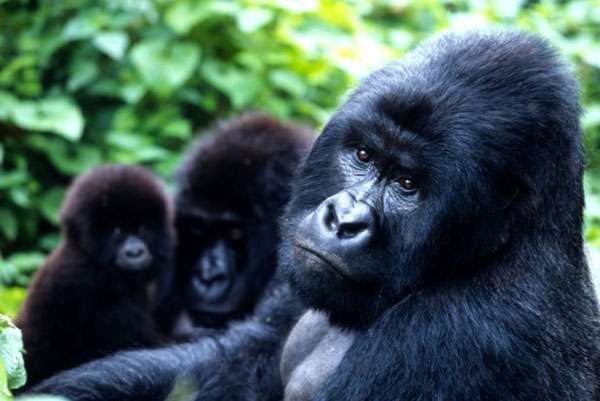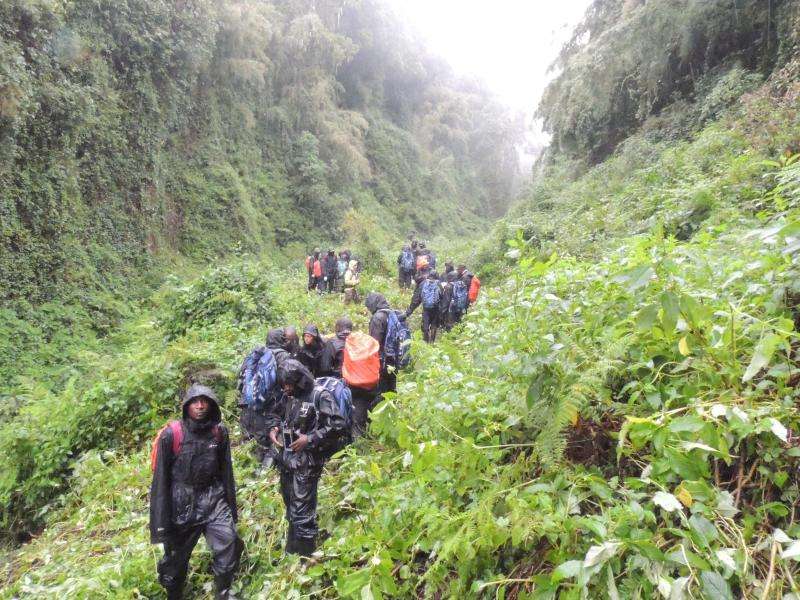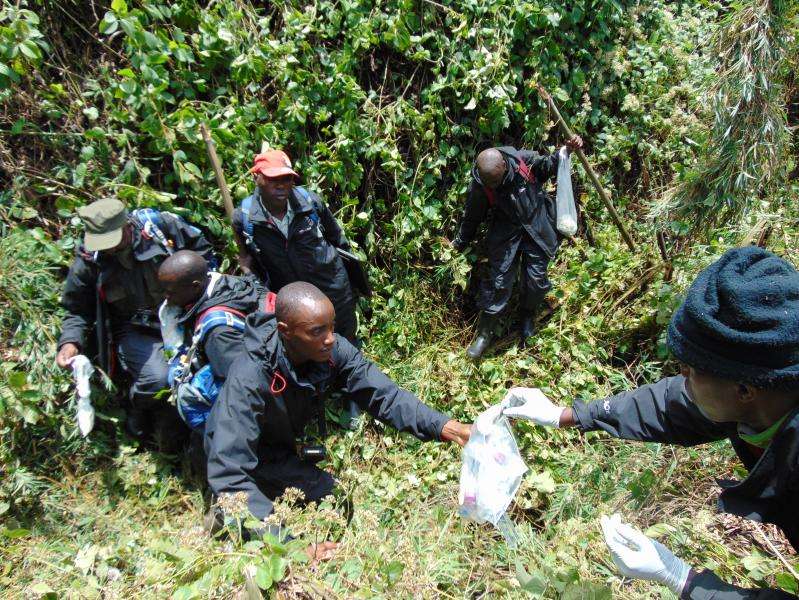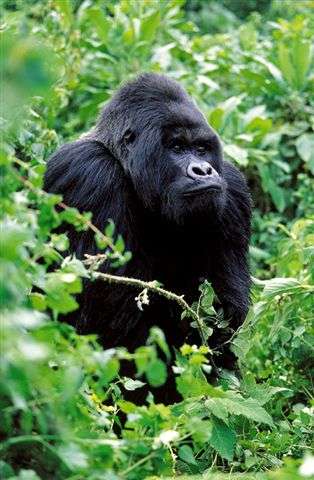New census critical for mountain gorillas in Virunga

A new census of mountain gorillas in the Virunga Massif will help gauge the impact of conservation work in the area and play a vital role in guiding future efforts to safeguard the critically endangered great ape and its fragile and restricted habitat.
Led by the Greater Virunga Transboundary Collaboration (GVTC) and supported by Fauna & Flora International (FFI) & WWF through the International Gorilla Conservation Programme (IGCP) and other partners, the count is the first since 2010 when it was estimated that there were 480 mountain gorillas in the 451 km2 Virunga Massif.
This site, which spans DRC, Rwanda and Uganda, is one of just two places where this gorilla subspecies is still found.
"Mountain gorilla numbers have been rising steadily in the Virunga Massif for the past two decades thanks to the dedicated work of rangers, conservationists and neighboring community members, and collaborative efforts by the three range States," says Anna Behm Masozera, IGCP director. "We are hopeful that the census will confirm that this trend is continuing, despite ongoing threats to the gorillas and their habitat."
Six teams comprising staff from the many participating institutions have begun systematically moving on foot through the Virunga Massif, looking for signs of mountain gorillas, recording mountain gorilla nest sites, and collecting faecal samples to be used for genetic analyses.

"The census is not based on actual sightings of every gorilla – instead it will rely on a combination of fieldwork and lab work to interpret the information and samples collected by the teams," explains Behm Masozera.
This census, which is anticipated to be the most accurate to date, will build on recent advancements in science and technology - from electronic data collection in the field to the genetic analyses conducted at the Max Planck Institute for Evolutionary Anthropology to the statistical analyses used to interpret the data.
"The census will provide the most detailed dataset on the entire population of Virunga's mountain gorillas; it will help us fine-tune the conservation strategy, building on the conservation successes of the past, to secure the long-term future of one of our closest living relatives," said Carlos Drews, WWF's global director of species conservation.
"The census will also focus on the need to preserve the mountain gorillas and their habitat, which supports the livelihoods of communities in all three countries."
The census will be a lengthy and detailed process, with a final population estimate expected to be released in 2017. Beyond the population number, the count will also provide information on demographics (age and sex ratio) within the Virunga Massif gorilla population, and the location of groups in relation to each other within the transboundary protected area.

"The census is a true testament to the strength of collaboration among governments and conservation organisations, which has been at the heart of efforts to save Virunga's mountain gorillas," said Chloe Hodgkinson, FFI. "The collaboration has gone from strength to strength, with a recent treaty between DRC, Rwanda and Uganda providing a formal structure that will allow us to act on the findings from the census – a source of real hope for Virunga and its majestic mountain gorillas."
The Virunga Massif, which comprises the Mikeno Sector of Virunga National Park (DRC), Volcanoes National Park (Rwanda) and Mgahinga Gorilla National Park (Uganda), is home to around half of the world's mountain gorillas, which number an estimated 880 individuals globally.

The remaining population is in Uganda's Bwindi Impenetrable National Park, which is contiguous with DRC's Sarambwe Nature Reserve.
The Virunga Massif mountain gorilla census is being conducted by the Protected Area Authorities in the DRC, Rwanda, and Uganda under the transboundary framework of the Greater Virunga Transboundary Collaboration.
Provided by WWF



















